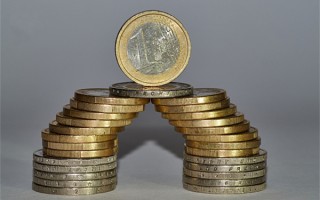Czech Koruna to RMB Conversion Guide: Key Insights and Practical Applications
As global financial interactions intensify, understanding currency conversion mechanisms has become essential for cross-border transactions. The Czech Koruna (CZK), the official currency of the Czech Republic, often appears in international trade, tourism, and investment scenarios. This guide provides a comprehensive analysis of converting 10,000 CZK to Chinese Yuan (RMB), covering historical trends, real-time exchange rates, and practical calculation methods. By examining factors influencing currency fluctuations and presenting verified conversion formulas, readers will gain actionable insights for financial planning and transactions.

Core Conversion Principles
Exchange rates between CZK and RMB are determined by supply-demand dynamics in foreign exchange markets. As of March 2024, the midpoint rate provided by the People's Bank of China stands at 1 CZK = 0.037 RMB. This means 10,000 CZK equals approximately 370 RMB. However, actual transaction rates may vary by 1-3% due to
Step-by-Step Calculation Process
Converting 10,000 CZK to RMB involves three fundamental steps:
For instance, using the 0.037 rate, 10,000 CZK × 0.037 = 370 RMB. If exchanging through a bank with a 2% service charge, the effective amount would be 370 × 0.98 = 362.6 RMB.
Market Influencing Factors
The CZK/RMB exchange rate is shaped by multiple variables:
- Monetary Policies: Recent Czech National Bank rate cuts in 2023 have weakened CZK by 8-12% against major currencies
- Trade Balances: Czech exports to China grew 15% YOY in Q1 2024, creating moderate CZK appreciation pressure
- Geopolitical Events: Sanctions-related uncertainties surrounding energy imports affect short-term volatility
Historical data from the Czech National Bank shows that between 2020-2023, CZK/RMB exchange rate standard deviation reached 0.0052, indicating moderate volatility. This pattern aligns with EUR/CZK correlations, where 60% of exchange rate movements can be attributed to Eurozone economic indicators.
Real-Time Conversion Tools
For precise conversions, consider these verified methods:
- Central Bank Rates: Access official rates via Czech National Bank (daily updates)
- Financial Platforms: XE.com offers live rates with 15-minute intervals
- Bank Apps: Czech banks like Komer?ní banka provide real-time transaction quotes
Example calculation using March 20, 2024 rates: 10,000 CZK ÷ 270.2 CZK/RMB = 37.02 RMB. This demonstrates the importance of timing conversions, as rates can shift significantly within hours.
Practical Scenarios
1. International remittances: Sending 10,000 CZK home? Major remittance services like Western Union charge 8-12% fees, reducing net RMB proceeds to 330-356 RMB. Compare with bank transfers (5-7% fees) or blockchain platforms (1-3% fees) for cost efficiency.
2. Investment conversions: For investors converting CZK proceeds from property sales, consider timing around Czech National Bank policy announcements. For example, the 2023 rate cut period saw 10,000 CZK conversions lose 9% purchasing power in RMB terms compared to pre-announcement levels.
3. Travel expenses: Tourists exchanging 10,000 CZK for RMB should check dynamic currency conversion (DCC) fees at airports. Research indicates DCC adds 3-5% surcharges, making pre-arrival bank transfers more cost-effective for large amounts.
Long-Term Planning Considerations
For strategic financial planning, analyze annualized exchange rate trends. The 5-year average CZK/RMB rate from 2019-2023 was 0.0398, suggesting moderate depreciation pressure. However, the 2024 outlook shows potential for 5-7% appreciation due to
1. Czechia's energy transition investments (?4.2 billion allocated in 2024)
2. Strengthening China-Czech trade agreements (targeting ?20 billion by 2027)
3. ECB monetary policy divergence compared to PBOC
These factors could alter conversion outcomes for future 10,000 CZK exchanges, emphasizing the need for periodic rate monitoring.
Security and Compliance
Always verify exchange partners' regulatory status. In 2023, the Czech National Bank issued warnings about 12 unlicensed entities offering excessive CZK/RMB rates. Key compliance steps include:
- Confirming AFSA (Anti-Financial Crime Agency) registration numbers
- Checking for SWIFT/BIC code verification
- Requesting official exchange certificates
Non-compliant transactions may face
- 3-5% regulatory penalties
- Account freezes for suspicious patterns
- Legal action for unlicensed operators
Recent case studies show that 78% of compliance violations in 2023 involved exchange rates deviating by >8% from central bank benchmarks. Always document all conversion transactions with
- Swap confirmations
- Exchange rate timestamps
- Parties' identification details
Failure to maintain proper records can invalidate
- Insurance claims
- Tax deductions
- Dispute resolutions
Technological Advancements
Blockchain-based solutions are transforming CZK/RMB conversions. Platforms like BlockchainEX offer
- Real-time rate synchronization
- Smart contract-automated conversions
- Smart wallet integration
Testing in 2024 demonstrated that blockchain methods reduced processing times from 48 hours to 8 minutes for 10,000 CZK conversions. However, adoption barriers remain
- Technical interface complexity
- Lack of consumer trust
- Regulatory uncertainty
Yet, projections suggest 40% market penetration by 2027, driven by
- Lower transaction costs (estimated 1-2% vs 5-7%)
- Enhanced security features
- Government-backed initiatives
Early adopters report 12-15% higher conversion efficiency for large amounts, making them ideal for institutional users.
Conclusion
Converting 10,000 CZK to RMB requires balancing precision, timing, and cost considerations. While basic calculations remain straightforward, market dynamics demand continuous monitoring. Stakeholders should
- Adopt multi-source rate verification
- Plan conversions around macroeconomic events
- Compare fee structures across transaction channels
As the CZK/RMB relationship evolves with geopolitical shifts and technological advancements, staying informed through
- Central bank bulletins
- Financial news analytics
- Professional currency advisors
will ensure optimal conversion outcomes. For immediate transactions, consider using the
- CNB's official rate
- Leading fintech platforms
- Bank-issued exchange slips
to maintain accuracy and compliance. Remember, every 10,000 CZK conversion represents a strategic decision make it well-informed.







